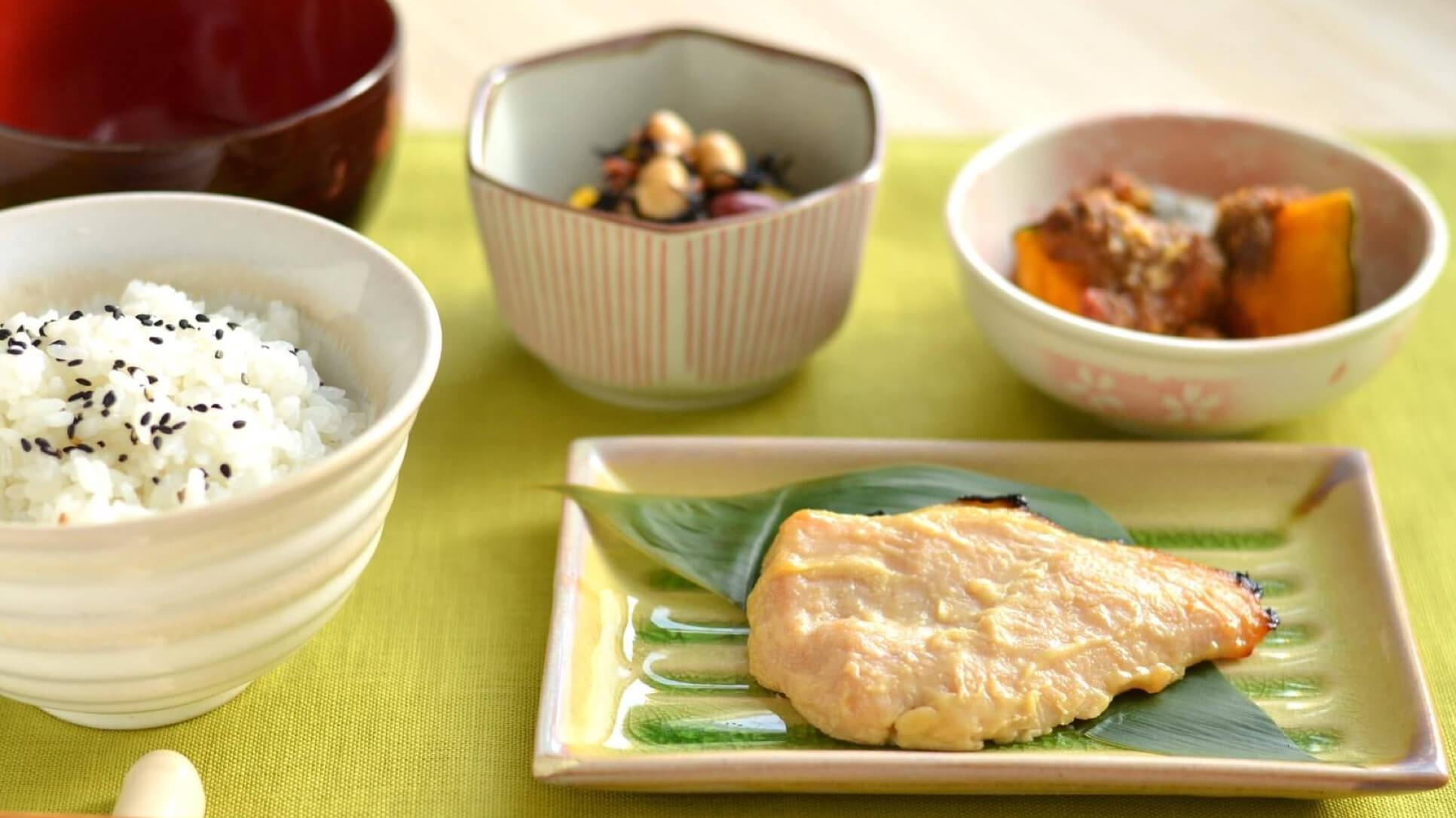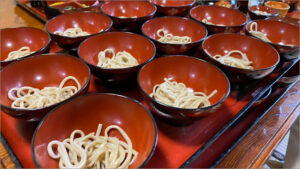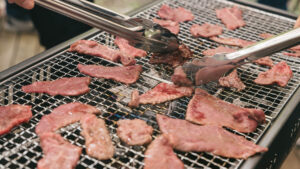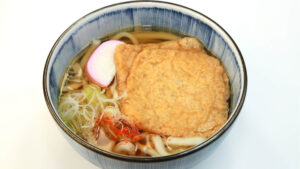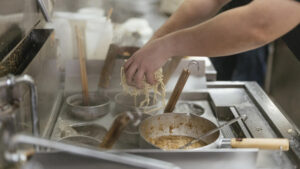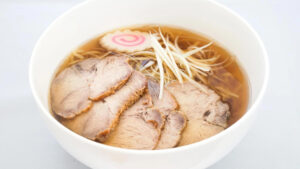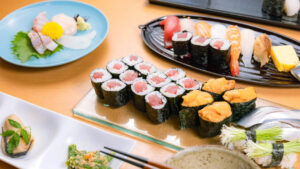Japanese breakfast is filled with wisdom that gently supports both your body and mind.
A traditional “washoku” morning meal—featuring rice, miso soup, grilled fish, and pickles—is not only nutritionally well-balanced, but also reflects the seasons and the warmth of home.
In this article, we’ll explore why Japanese breakfast is considered an ideal way to start the day, introduce classic menu items, and share practical tips and cultural insights for enjoying it—no matter where you live.
Contents
Why Is Japanese Breakfast Considered the Ideal Meal?
The Concept of “Ichiju Sansai” (One Soup, Three Dishes)
What Is Ichiju Sansai?
“Ichiju Sansai” is a traditional Japanese meal structure that forms the foundation of washoku (Japanese cuisine).
It consists of a bowl of rice as the staple food, one soup (“ichiju”), and three side dishes—one main and two secondary.
This style of eating originated from the court cuisine of the Heian period and gradually became a staple in Japanese households over centuries.
Beyond nutritional balance, it also values visual presentation, seasonality, and the diversity of ingredients.
A Well-Balanced Structure
From a nutritional standpoint, ichiju sansai is considered an ideal combination.
Rice provides carbohydrates as the main energy source, soup offers hydration along with vitamins and minerals from its ingredients, the main dish supplies protein, and the side dishes—usually vegetable-based—deliver fiber and enzymes.
Additionally, this structure is designed to create harmony in taste, texture, and color, making even a simple breakfast feel satisfying and varied.
Differences from Western-Style Breakfast
Compared to typical Western breakfasts—such as bread with eggs, bacon, and juice—Japanese breakfast uses less oil and emphasizes natural, whole ingredients.
Fermented foods like miso and natto are often included, which help improve gut health and support the body from within.
While Western breakfasts are often quick and convenient, Japanese breakfast is seen as a mindful way to start the day—reflecting the cultural value of preparing and eating meals with care and intention.
Excellent Nutritional Balance
The Ideal: Low Fat, High Protein
Japanese breakfast typically avoids excess oil and emphasizes cooking methods that bring out the natural flavors of ingredients.
Protein-rich foods like grilled fish, natto, and tofu take center stage, while fat content is kept minimal.
Despite its simplicity, this style of eating provides all the essential nutrients your body needs—making it a truly “low-fat, high-protein” ideal meal.
This is especially important in the morning, when protein supports muscle repair and activates metabolism for the day ahead.
Rich in Fiber and Fermented Foods
Japanese meals often include small vegetable side dishes, seaweed, and mushrooms—all excellent sources of dietary fiber.
These ingredients are key to supporting gut health. In addition, fermented foods like miso soup, natto, and pickles are rich in probiotics that help increase good bacteria in the gut and boost immunity.
Starting your day with these ingredients enables a “double benefit” approach to health—supporting digestion and nutrition at the same time.
Stable Blood Sugar and Better Focus
Breakfast is crucial for refueling your body and brain. Japanese meals offer slowly digesting carbohydrates like rice, combined with protein, healthy fats, and fiber.
This combination helps prevent blood sugar spikes and provides a steady release of energy throughout the morning.
As a result, it can reduce post-meal fatigue and improve concentration, helping you stay sharp and productive.
Japanese breakfast is not only gentle on your body—it’s also kind to your mind.
Healthy Habits That Nourish Both Body and Mind
Appreciating Seasonal Ingredients
One of the great appeals of Japanese cuisine is the emphasis on seasonal ingredients.
In spring, you might enjoy mountain vegetables; in summer, chilled tomatoes and cucumbers; in autumn, mushrooms and pacific saury; and in winter, hearty root vegetables or sake lees soup.
These foods are not only at their most flavorful and nutritious when in season, but they also align with the body’s natural rhythms—helping to support overall wellness.
Sensing the change of seasons through your morning meal is a uniquely enriching part of the Japanese breakfast experience.
Taking Time to Eat Mindfully
A traditional Japanese breakfast includes a variety of small dishes, beautifully presented. This naturally encourages a slower, more mindful way of eating.
By savoring each bite—its flavor, texture, and aroma—you create space for calm and presence in the early hours.
This “unhurried morning time” can help regulate your daily rhythm, reduce stress, and foster a greater sense of well-being.
In today’s fast-paced world, such quiet moments at breakfast are especially valuable.
Starting the Day on a Positive Note
Enjoying a thoughtfully prepared breakfast in a peaceful setting offers a sense of gentle richness.
Not only does it nourish your body, but it also fulfills you emotionally—allowing you to begin your day with a calm and positive mindset.
Preparing breakfast for a loved one, or sharing the morning table with someone, can also foster connection and emotional warmth.
A Japanese-style breakfast, in this sense, is more than just a meal—it’s a daily practice that nurtures both heart and health.
Discover Classic Japanese Breakfast Dishes
Rice: White, Multigrain, and Rice Porridge
The Role of Rice as a Staple
Rice is an essential part of a traditional Japanese breakfast.
For Japanese people, rice is more than just a staple—it’s a symbol of culture, seasonality, and home-cooked warmth.
Including rice in your morning meal provides carbohydrates, the body’s primary energy source, helping to fuel your activities through the morning.
Its mild flavor also pairs beautifully with other typical breakfast items such as grilled fish, miso soup, and pickles, enhancing overall balance and harmony.
Types of Rice and How to Cook Them
While white rice is most common, many households now include brown rice or multigrain rice in their breakfast routines, especially as health-conscious eating becomes more popular.
Brown rice is rich in fiber, vitamins, and minerals, and is known to support gut health. Multigrain rice is visually appealing, has a fun texture, and makes breakfast more interesting.
How you cook your rice also matters—achieving the perfect fluffiness depends on the right water ratio and soaking time.
Whether you use a rice cooker or a traditional clay pot, different methods produce different textures. Try a few to find what suits your taste best.
Onigiri and Okayu: Quick and Gentle Variations
If you’re in a hurry, rice balls—known as onigiri—are a great grab-and-go option.
Fillings like umeboshi (pickled plum), kombu (kelp), or grilled salmon make them flavorful and nutritious, and wrapping them in nori seaweed keeps your hands clean and presentation neat.
Another gentle option is rice porridge, or okayu, which is easy to digest and perfect for days when you’re feeling under the weather or just want something light.
Top it with umeboshi, salted kelp, or a soft-cooked egg to change up the flavor and add a bit of variety.
Soups: Miso Soup, Clear Broth, and More
Common Ingredients in Miso Soup
Miso soup is a staple of the Japanese breakfast table.
Thanks to its endless variety of ingredient combinations, it can be enjoyed daily without becoming boring.
Basic ingredients often include tofu, wakame seaweed, and green onions—all easy to prepare with items commonly found in the refrigerator.
Another charm of miso soup is how it reflects the seasons.
In spring, you might find nanohana (rapeseed blossoms) or bamboo shoots; in summer, eggplant or myoga (Japanese ginger); in autumn, assorted mushrooms; and in winter, daikon radish or taro.
By changing the ingredients throughout the year, you can enjoy the natural rhythm of the seasons in every bowl.
Regional Variations in Miso Culture
Each region of Japan has its own miso traditions shaped by local climate and history.
For example, in the Kanto region, red miso or medium-salty rice miso is common—offering rich, deep flavor.
In the Kansai region, white miso is more popular, known for its mild and slightly sweet taste.
In the colder Tohoku region, saltier miso is favored, reflecting its historical role in food preservation during long winters.
These regional differences directly influence the flavor of miso soup, making it fun to try local varieties while traveling through Japan.
The Health Benefits of Miso
Miso is a fermented food made from soybeans and is highly valued for its health benefits.
The enzymes and lactic acid bacteria produced during fermentation help promote gut health and strengthen the immune system.
It’s also rich in plant-based protein, B vitamins, and essential minerals—making it a nutritious addition to your breakfast.
Warm miso soup gently heats the body from the inside, making it especially welcome on chilly mornings.
A single bowl of miso soup each day can be a small but meaningful step toward supporting both physical and mental well-being.
Side Dish Variations
Grilled Fish: Salmon, Mackerel, and More
One of the most iconic main dishes in a Japanese breakfast is grilled fish.
Among the most popular choices are salmon and mackerel, often lightly salted and grilled to bring out their natural flavor.
These simple yet savory dishes pair perfectly with rice and represent the essence of traditional washoku (Japanese cuisine).
In addition to being high in protein and low in fat, fish also provide healthy omega-3 fatty acids like DHA and EPA, which are known to support brain function and promote heart health.
For busy mornings, you can prepare and freeze grilled fish in advance for quick and easy use.
Pickles and Small Vegetable Dishes
Pickled vegetables and small side dishes (kobachi) play an important role in adding color, texture, and variety to the meal.
Common examples include lightly pickled cucumbers, takuan (pickled daikon), and umeboshi (pickled plums), all of which stimulate the appetite and offer probiotic benefits for gut health.
Small side dishes may include spinach ohitashi (boiled greens), simmered hijiki seaweed, or kinpira gobo (braised burdock root), which are rich in nutrients and typically plant-based.
Serving a variety of these in small portions creates a visually satisfying and nutritionally balanced meal.
Japanese Omelet and Natto: Classic Staples
Tamagoyaki (Japanese rolled omelet) and natto (fermented soybeans) are classic items in many Japanese breakfasts.
Tamagoyaki varies by region and household—some prefer a sweeter Kanto-style version, while others enjoy a lighter, dashi-flavored Kansai-style omelet.
It’s also a common addition to bento lunches and adds a cheerful color to the morning table.
Natto is well known for its nutritional value as a fermented food. It’s packed with plant-based protein, vitamin K, and nattokinase, which supports circulation and overall health.
Best of all, natto can be eaten as-is over rice, making it a fast, easy, and healthful choice for busy mornings.
Easy Japanese Breakfast Ideas for Beginners
Basic Sets to Try First
Rice + Miso Soup + Grilled Fish
A classic Japanese breakfast set—rice, miso soup, and grilled fish—is highly recommended for first-timers.
It offers excellent nutritional balance and is quite filling, making it both satisfying and healthy.
While freshly cooked rice is ideal, reheating frozen rice in the microwave works just fine.
Miso soup can be made in minutes using instant miso packets, and grilled fish can be quickly cooked in a frying pan or grill.
This simple trio of staple, soup, and main dish forms the foundation of a well-rounded Japanese breakfast.
Onigiri and Green Tea for a Light Start
If you don’t have much appetite in the morning, a light set of onigiri (rice ball) and green tea is a great choice.
You can customize your onigiri with various fillings such as pickled plum (umeboshi), kelp (kombu), or tuna mayo.
Wrapping them in nori (seaweed) keeps your hands clean and makes them convenient to carry.
Sipping warm green tea alongside your onigiri gently warms the body and creates a calm, grounding moment to start the day.
This set helps you avoid overeating while still giving your body the energy it needs.
Plant-Based Options with Natto and Tofu
For those avoiding animal products or following a vegetarian diet, a plant-based Japanese breakfast with natto and tofu is ideal.
Natto is easy to prepare—just scoop it onto rice—and it’s rich in protein and dietary fiber.
Tofu can be served chilled as hiyayakko, warmed as yudofu, or added to miso soup.
Add vegetable sides such as spinach ohitashi or kinpira gobo to boost the meal’s nutritional value.
This type of breakfast is gentle on the stomach, clean in flavor, and perfect for a fresh start to the day.
Quick Recipes for Busy Mornings
5-Minute Miso Soup
Even the classic miso soup can be made in just five minutes with a few smart shortcuts.
Use dried wakame, pre-cut vegetable mixes, and miso paste with dashi already included.
Boil water in a pot, add the dried ingredients directly, and let them cook briefly. Then turn off the heat and stir in the miso paste.
Frozen spinach or tofu also work great as quick ingredients.
With minimal effort, you’ll have a warm, comforting bowl of miso soup ready in no time.
Microwave Tamagoyaki (Japanese Omelet)
No frying pan needed—make fluffy tamagoyaki right in the microwave.
Crack 2 eggs into a bowl, add a splash of dashi (or water), plus a bit of soy sauce and sugar, and whisk well.
Pour into a microwave-safe container (uncovered) and heat at 600W for 1 minute. Stir once, then heat for another 30 seconds to 1 minute.
Shape and slice after cooking, and you’ll have a fluffy Japanese omelet perfect for breakfast or lunchboxes, with almost no cleanup.
Instant Rice Bowls for a Hearty Start
When you need a filling breakfast in a hurry, try an instant rice bowl.
Just top warm rice with easy toppings like natto, shirasu (whitebait), egg yolk, shredded nori, and chopped green onion.
A splash of soy sauce or ponzu is all you need for seasoning.
You can also use leftovers from the night before—like grilled fish or simmered vegetables—for added flavor.
This quick and satisfying meal keeps dishes to a minimum and provides a solid energy boost to start your day.
How to Find Japanese Breakfast Ingredients Abroad
Japanese Ingredients Available at Local Stores
You don’t need a Japanese grocery store to start making a simple Japanese breakfast.
Many Asian supermarkets and large natural food stores carry essentials such as short-grain rice, tofu, nori (seaweed), dried wakame, and frozen edamame.
These basics make it easy to recreate a traditional meal at home.
Frozen fish like salmon or mackerel is often available too, and local vegetables and mushrooms can easily substitute for typical miso soup ingredients.
You might be surprised how accessible the essentials of washoku really are.
How to Choose Miso and Soy Sauce
Miso and soy sauce are key condiments in Japanese cooking—especially at breakfast.
Look for “miso paste” in international or health food sections, and if possible, choose one labeled “additive-free” or “no dashi added” so you can adjust the flavor yourself.
Soy sauce is widely available under the label “soy sauce,” but opt for one that says “Japanese-style” or choose familiar brands like Kikkoman to get closer to authentic flavor.
You can also find low-sodium or gluten-free versions to match your dietary needs.
Tips for Shopping Online
If local stores don’t carry what you need, online shopping is a great option.
Websites like Amazon, iHerb, and Asian Food Grocer offer a wide selection of pantry-friendly Japanese staples—miso, soy sauce, dashi powder, dried seaweed, and even freeze-dried natto.
To save on shipping, consider ordering shelf-stable items in bulk or looking for sites that ship frozen products.
Check reviews and product ratings to ensure quality.
With a little planning, you can slowly build your own “Japanese breakfast set” no matter where you are in the world.
The Cultural Significance of Japanese Breakfast
Breakfast at a Traditional Ryokan
Elegant and Carefully Prepared Morning Meals
Staying at a traditional Japanese ryokan often includes an unforgettable breakfast experience.
Grilled fish, freshly steamed rice, savory miso soup, handmade side dishes, pickles, rolled omelet, and seaweed are all thoughtfully arranged with attention to balance, color, and presentation.
Each item is served in small portions in individual dishes, allowing guests to enjoy a variety of flavors and textures.
The attention to detail and regional specialties in every dish reflect the ryokan’s personality and make your morning meal a memorable part of your journey.
Experiencing the Spirit of “Omotenashi”
Japanese hospitality, or omotenashi, is deeply woven into the ryokan breakfast experience.
From ingredient selection and cooking techniques to the timing of each dish being served, every step reflects care and thoughtfulness.
Menus often feature seasonal ingredients from the local area, gentle seasoning suited for the morning, and warm dishes served hot at just the right moment.
More than just a meal, it becomes a sensory experience that allows guests to feel the depth and refinement of Japanese culture.
Dining Etiquette and Cultural Mindfulness
While there are no strict formalities during ryokan breakfast, knowing some basic etiquette can enhance the experience.
For example, it’s customary to use a chopstick rest rather than placing your chopsticks across the top of a bowl.
Also, holding your rice bowl or miso soup bowl in your hands while eating is considered polite.
Saying itadakimasu before the meal and gochisousama after finishing is another important expression of gratitude.
Eating quietly and respectfully in a calm atmosphere, savoring each dish with appreciation, naturally brings you closer to the Japanese value of living with care and intention.
Japanese Breakfast in Daily Family and School Life
The Importance of Breakfast for Children
In Japan, eating breakfast is considered essential for children’s concentration, academic performance, and overall health.
Many elementary schools and preschools teach that “breakfast is the energy source for the day,” and families are encouraged to establish consistent morning routines.
Typical breakfast items include rice and miso soup, tamagoyaki (Japanese omelet), and natto—offering a well-balanced combination of nutrients.
Eating breakfast helps wake up both body and mind, preparing children to start the school day with energy and focus.
Sharing breakfast time as a family also creates a valuable opportunity for communication between parents and children.
The Connection Between Breakfast and Bento
In Japan, the culture of preparing and bringing bento (lunch boxes) to school or work is closely linked to breakfast.
Often, the morning meal and the bento are prepared side by side, with some dishes served for breakfast and the rest packed for lunch.
Tamagoyaki, grilled fish, and simmered vegetables are classic examples that serve both purposes.
This dual-purpose cooking approach is efficient and reflects the practical wisdom of Japanese households.
Each family’s unique seasoning and presentation add a personal touch, making bento and breakfast a heartfelt expression of care and tradition.
Time-Saving Tips for Busy Families
With the rise of dual-income households in recent years, many families have less time in the morning.
Still, there are creative ways to incorporate Japanese breakfast.
Staples like frozen rice, pre-prepared side dishes, and instant miso soup help save time without compromising nutrition.
Leftovers from dinner can be repurposed for breakfast, and side dishes that can be quickly reheated in the microwave add convenience.
This time-efficient yet health-conscious approach showcases the flexibility and ingenuity of Japanese family life.
Seasonal Variations in Japanese Breakfast
Spring: Enjoying Mountain Vegetables and Bamboo Shoots
Spring Japanese breakfasts often feature seasonal delicacies like mountain vegetables (such as tara no me, kogomi, and zenmai) and bamboo shoots.
These ingredients offer a pleasant bitterness and aroma unique to the season.
Common spring dishes include mountain vegetable ohitashi (lightly boiled greens), bamboo shoot rice, and miso soup with nanohana (rapeseed blossoms).
These seasonal foods are also believed to help “detox” the body by flushing out winter’s buildup, supporting physical balance.
Enjoying nature’s fresh bounty in the morning is one of the luxuries of a traditional Japanese breakfast.
Summer: Light Meals with Cold Chazuke and Umeboshi
As summer heat intensifies, lighter and more refreshing breakfast options become popular.
One classic dish is cold chazuke—warm rice topped with chilled green tea or dashi broth.
Umeboshi (pickled plum) is another summer staple known for its appetite-boosting tanginess.
Adding aromatic vegetables like cucumber, myoga (Japanese ginger), and shiso (perilla leaves) enhances the cooling effect and makes the meal easy to eat even when your appetite is low.
Chazuke also provides hydration and salt, helping prevent heat fatigue in the most natural way.
Winter: Warming Kenchinjiru and Kasujiru
On cold winter mornings, hearty soups take center stage.
Kenchinjiru—a soup filled with root vegetables like daikon, carrots, burdock, along with konnyaku and tofu—and kasujiru—a miso-based soup enriched with sake lees—are both traditional winter warmers.
These soups are packed with the umami of vegetables and pair perfectly with steamed rice for a deeply satisfying meal.
The warmth, aroma, and nourishment they provide make them feel like “edible heating.”
They embody the wisdom of Japanese winter cuisine: to eat with care, warmth, and balance.
Tips for Incorporating Japanese Breakfast into Daily Life
Start with Once a Week
Rethink Your Morning Routine
Preparing a traditional Japanese breakfast every day may seem daunting at first.
A great first step is to start with just one “Japanese breakfast day” per week.
To make it work, consider adjusting how you spend your mornings—perhaps reducing smartphone time or waking up just 10 minutes earlier.
Taking a quiet moment to enjoy rice and miso soup at a relaxed pace brings a sense of calm and sets a positive tone for the day ahead.
Save Time with Night-Before Prep
The key to fitting Japanese breakfast into busy mornings is preparation the night before.
For example, chop ingredients for miso soup and store them in the fridge, marinate fish for grilling, or cook rice and freeze it in individual portions.
That way, you only need to boil the soup and reheat the rice the next morning.
Even a simple 10-minute effort in the evening can create a peaceful, efficient start to your day.
Use Frozen Foods and Meal Prep
Freezing and meal prepping are essential for making Japanese breakfasts a regular habit.
Cooked rice can be portioned and frozen—simply reheat in the microwave when needed.
Using frozen vegetables in your miso soup also saves time and effort.
Side dishes like tamagoyaki (rolled omelet), simmered hijiki, or kinpira gobo can be prepared in batches on weekends and simply plated in the morning.
As you gradually build your stock of prepared items, your breakfast table will naturally become richer and more fulfilling.
Smart Ingredient Stocking
Handy Ingredient List to Keep at Home
To make Japanese breakfasts a regular part of your routine, it helps to always have certain ingredients on hand.
Keeping these stocked in your refrigerator, freezer, or pantry will reduce the stress of daily meal planning and make it easier to prepare balanced meals quickly.
Refrigerated:
- Eggs – for tamagoyaki (Japanese omelet) or miso soup
- Natto – a nutritious fermented soybean dish
- Tofu – perfect for chilled tofu (hiyayakko) or soup
- Miso – ready-made or dashi-infused miso paste is fine
Frozen:
- Cooked rice – portioned into single servings and frozen
- Pre-cut vegetables – spinach, komatsuna (Japanese mustard spinach), mushrooms
- Grilled fish – fillets or dried fish that have been pre-cooked and frozen
Pantry/Dried Goods:
- Nori (dried seaweed) and furikake (rice seasoning)
- Umeboshi (pickled plums) and other pickled vegetables
- Dried wakame seaweed and dashi (soup stock) packs
- White sesame seeds and sesame salt
With these basics on hand, you can mix and match to create countless breakfast combinations.
Having a reliable stock makes it much easier to maintain a Japanese-style breakfast habit, even on busy mornings.
Tips for Freezing and Reheating
When freezing rice, wrap freshly cooked rice in plastic wrap while it’s still warm and flatten it. This helps it reheat evenly and quickly in the microwave.
For grilled fish, wrap it first in plastic wrap and then in aluminum foil to prevent drying out during storage.
When reheating frozen items, use the defrost mode or a low-power setting (200–300W) on your microwave. This helps maintain the texture and flavor.
Frozen vegetables can be added directly to miso soup, saving time while still boosting nutrition.
Creative Ways to Reuse Leftover Ingredients
Leftover ingredients from breakfast can be easily repurposed into delicious dishes with a little creativity.
For example, flaked grilled fish makes a great filling for onigiri (rice balls) or a topping for ochazuke (rice with green tea).
Leftover miso soup with ingredients can be turned into tamago-toji (egg drop soup) or zōsui (Japanese rice porridge).
Partially used vegetables or small side dishes can be transformed into stir-fried dishes or even added to Japanese-style pasta.
Using up all your ingredients not only reduces food waste and saves money but also supports a more sustainable lifestyle.
